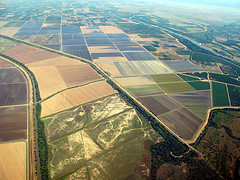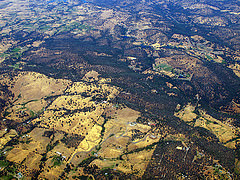Landscape Conservation Design (DRAFT)
 Sutter Bypass and Feather River Photo by Patrick Huber |
What are Landscape Conservation Designs?Landscape Conservation Designs (LCDs) are cooperative landscape conservation processes that identify areas that are an ecologically-connected network of terrestrial, freshwater, coastal, and marine conservation areas that are likely to be resilient to climate change and to support a broad range of fish, wildlife, and plants under changed conditions. They provide information on where to sustain natural and cultural resources across the region and landscape, what conservation actions are needed, how much and who can contribute to those actions. |
Why are LCDs needed?The ability to conserve resilient and adaptable ecosystems is a significant challenge considering stressors like climate change, land use change, and invasive species. The daunting magnitude and complexity of these challenges cannot be addressed by a single agency or organization and requires that we look beyond our organizational boundaries and work more collaboratively to achieve a shared conservation vision across the landscape. |
|
How are LCDs created?In creating an LCD, each partner identifies the conservation features within their purview (such as the Fish & Wildlife Service’ surrogate species and the FWS Refuge System’s strategic growth priorities). Collectively, these features are used to define the geographic extent of the LCD, develop conservation targets (such as population objectives) within that landscape, identify limiting factors (i.e., threats and stressors such as climate change), conduct gap and population analyses, and model future resource relationships. The partners then identify management, restoration, and protection strategies that can be implemented to address the identified resource concerns, attain desired future conditions, sustain ecosystem function, and achieve the missions, mandates, and goals of each partner organization. Upon completion of the LCD, partners implement the strategies applicable to their organization. |
 Sierra Nevada foothills Photo by Patrick Huber |
|
An LCD functions as both a product and a process. The products portion includes landscape scale climate-smart strategies across multiple management units and managing organizations. The process portion of a LCD involves the continual collaboration and adaptation based on emerging science, changing climate conditions and capabilities of all partners involved.
An LCD is not a static product. It must be periodically modified by all partners based on the results of their collective implementation, monitoring, and evaluation. This is adaptive management at a landscape scale. |
Learn MorePlease see these resources for more information about Landscape Conservation Design: |
8/2014
